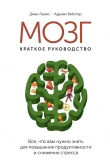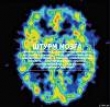
Текст книги "Мозг: от хорошего к превосходному"
Автор книги: Дэниел Амен
Жанр:
Медицина
сообщить о нарушении
Текущая страница: 24 (всего у книги 25 страниц)
Manning, J., and R. Taylor, «Long Ring Fingers and Testosterone», Evolution and Human Behavior 22 (January 2001): 61–69.
Martin, S. М., J. T. Manning, and C. F. Dowrick, «Fluctuating Asymmetry, Relative Digit Length and Depression in Men», Evolution and Human Behavior 20 (1999): 203–14.
Meaddough, E. L., et al. «Sexual Activity, Orgasm and Tampon Use Are Associated with a Decreased Risk for Endometriosis», Gynecologic and Obstetric Investigation 53 (2002): 163–69.
Murrell, T. G. C., «The Potential for Oxytocin (ОТ) to Prevent Breast Cancer: A Hypothesis», Breast Cancer Research and Treatment 35 (1995): 225–29.
Odent, M., «Vie Scientification of Love» (London: Free Association Books, 1999).
Ogden, G., «Spiritual Passion and Compassion in Late-Life Sexual Relationships», Electronic Journal of Human Sexuality (August 14, 2001), http://www.ejhs. org/volume4/ Ogden.htm.
Palmore, E., «Predictors of the Longevity Difference: A Twenty-Five Year Follow-Up», Gerontologist 22 (1982): 513–18.
Persson, G., «Five-Year Mortality in a 70-Year-Old Urban Population in Relation to Psychiatric Diagnosis, Personality, Sexuality and Early Parental Death», Acta Psychiatrica Scandinavica 64 (1981): 244–53.
Petridou, E., et al. «Endocrine Correlates of Male Breast Cancer Risk: A Case-Control Study in Athens, Greece», British Journal of Cancer 83, no. 9 (2000): 1234–37.
Sandel, М. E., et al. «Sexual Functioning Following Traumatic Brain Injury», Brain Injury 10, no. 10 (October 1996): 719–28.
Sayle, A. E., et al. «Sexual Activity During Late Pregnancy and Risk of Preterm Delivery», Obstetrics and Gynecology 97, no. 2 (2001): 283–89.
Shapiro, D., «Effect of Chronic Low Back Pain on Sexuality», Medical Aspects of Human Sexuality 17 (1983): 241–45; cited in Komisaruk and Whipple, «Suppresses of Pain».
Singh, D., et al. «Frequency and Timing of Coital Orgasm in Women Desirous of Becoming Pregnant», Archives of Sexual Behavior 27, no. 1 (1998): 15–29.
Spencer, N. A., et al. «Social Chemosignals from Breastfeeding Women Increase Sexual Motivation», Hormones and Behavior 46, no. 3 (September 2004): 362–70.
Sprecher, S., «Sexual Satisfaction in Premarital Relationships: Associations with Satisfaction, Love, Commitment, and Stability», Journal of Sex Research 39, no. 3 (2002): 190–96.
Tur-Kaspa, I., et al. «How Often Should Infertile Men Have Intercourse to Achieve Conception?» Fertility and Sterility 62, no. 2 (1994): 370–75.
Von Sydow, K., «Sexuality During Pregnancy and After Childbirth: A Metacontent Analysis of 59 Studies», Journal of Psychosomatic Research 47, no. 1 (1999): 27–49.
Walters, A. S., and G. M. Williamson, «Sexual Satisfaction Predicts Quality of Life: A Study of Adult Amputees», Sexuality and Disability 16, no. 2 (1998): 103–15.
Warner, P., and J. Bancroft, «Mood, Sexuality, Oral Contraceptives and the Menstrual Cycle», Journal of Psychosomatic Research 32, nos. 4–5 (1988): 417–27.
Weeks, D., and J. James, «Secrets of the Superyoung» (New York: Berkley Books, 1998).
Whipple, B., and B. R. Komisaruk, «Elevation of Pain Threshold by Vaginal Stimulation in Women», Pain 21 (1985): 357–67.
Wilson, М., and M. Daly, «Do Pretty Women Inspire Men to Discount the Future?» Proceedings of the Royal Society of London, Series B-Biological Sciences 271, Suppl. 4 (May 7, 2004): SI77–79.
Zamboni, В. D., and I. Crawford, «Using Masturbation in Sex Therapy: Relationships Between Masturbation, Sexual Desire, and Sexual Fantasy», Journal of Psychology and Human Sexuality 14, nos. 2–3 (2002): 123–41.
Глава 16
Baxter, L. R., Jr, et al. «Caudate Glucose Metabolic Rate Changes with Both Drug and Behavior Therapy for Obsessive-Compulsive Disorder», Archives of General Psychiatry 49, no. 9 (September 1992): 681–89.
Brody, A. L., et al. «FDG-PET Predictors of Response to Behavioral Therapy and Pharmacotherapy in Obsessive Compulsive Disorder», Psychiatry Research 84, no. 1 (November 9, 1998): 1–6.
Brody, A. L., et al. «Regional Brain Metabolic Changes in Patients with Major Depression Treated with Either Paroxetine or Interpersonal Therapy: Preliminary Findings», Archives of General Psychiatry 58, no. 7 (July 2001): 631–40.
Davidson, J. R., et al. «Fluoxetine, Comprehensive Cognitive Behavioral Therapy, and Placebo in Generalized Social Phobia», Archives of General Psychiatry 61, no. 10 (October 2004): 1005–13.
Findley, Т., «The Placebo and the Physician», Medical Clinics of North America 1 (November 1983): 1821–26.
Frank, J. D., «The Dynamics of the Psychotherapeutic Relationship: Determinants and Effects of the Therapists Influence», Psychiatry 22, no. 1 (February 1959): 17–39.
Furmark, T., et al. «Common Changes in Cerebral Blood Flow in Patients with Social Phobia Treated with Citalopram or Cognitive-Behavioral Therapy», Archives of General Psychiatry 59, no. 5 (May 2002): 425–33.
Goldapple, K., et al. «Modulation of Cortical-Limbic Pathways in Major Depression: Treatment-Specific Effects of Cognitive Behavior Therapy», Archives of General Psychiatry 61, no. 1 (January 2004): 34–41.
Levin, P., S. Lazrove, and B. van der Kolk, «What Psychological Testing and Neuroimaging Tell Us About the Treatment of Posttraumatic Stress Disorder by Eye Movement Desensitization and Reprocessing», Journal of Anxiety Disorders 13, nos. 1–2 (January-April 1999): 159–72.
Martin, S. D., et al. «Brain Blood Flow Changes in Depressed Patients Treated with Interpersonal Psychotherapy or Venlafaxine Hydrochloride: Preliminary Findings», Archives of General Psychiatry 58, no. 7 (July 2001): 641–48.
Nakatani, E., et al. «Effects of Behavior Therapy on Regional Cerebral Blood Flow in Obsessive-Compulsive Disorder», Psychiatry Research 124, no. 2 (October 30, 2003): 113–20.
Paquette, V., et al. «Change the Mind and You Change the Brain: Effects of Cognitive-Behavioral Therapy on the Neural Correlates of Spider Phobia», Neuroimage 18, no. 2 (February 2003): 401–09.
Prasko, J., et al. «The Change of Regional Brain Metabolism (18FDG PET) in Panic Disorder During the Treatment with Cognitive Behavioral Therapy or Antidepressants» Neuroendocrinology Letters 25, no. 5 (October 2004): 340–48.
Schwartz, J. М., et al. «Systematic Changes in Cerebral Glucose Metabolic Rate After Successful Behavior Modification Treatment of Obsessive-Compulsive Disorder», Archives of General Psychiatry 53, no. 2 (February 1996): 109–13.
Глава 17
Bridgett, D. J., and J. Cuevas «Effects of Listening to Mozart and Bach on the Performance of a Mathematical Test», Perceptual and Motor Skills 90 (2000): 1171–75.
Campbell, D. «The Mozart Effect: Tapping the Power of Music to Heal the Body, Strengthen the Mind, and Unlock the Creative Spirit» (New York: Avon, 1997).
Carlson, S., et al. «Effects of Music and White Noise on Working Memory Performance in Monkeys», Neuroreport 8 (1997): 2853–56.
Creutzfeldt, O., and G. Ojemann, «Neuronal Activity in the Human Lateral Temporal Lobe. III. Activity Changes During Music», Experimental Brain Research 77 (1989): 490–98.
Esch, T., et al. «Commonalities in the Central Nervous Systems Involvement with Complementary Medical Therapies: Limbic Morphinergic Processes», Medical Science Monitor 10, no. 6 (June 2004): MS6–17.
Formisano, R., et al. «Active Music Therapy in the Rehabilitation of Severe Brain Injured Patients During Coma Recovery», Annali dell'Istituto superiore di sanit’ 37, no. 4 (2001): 627–30.
Gruhn, W., N. Galley, and C. Kluth, «Do Mental Speed and Musical Abilities Interact?» Annals of the New York Academy of Sciences 999 (November 2003): 485–96.
Jausovec, N., and K. Habe, «The ‘Mozart Effect’: An Electroencephalographic Analysis Employing the Methods of Induced Event-Related Desynchronization/Synchronization and Event-Related Coherence», Brain Topography 16, no. 2 (Winter 2003): 73–84.
Johnson, J. K., et al. «Enhancement of Spatial-Temporal Reasoning After a Mozart Listening Condition in Alzheimer’s Disease: A Case Study», unpublished.
Kim, W. S., et al. «Asymmetric Activation in the Prefrontal Cortex by Sound-Induced Affect», Perceptual and Motor Skills 97, no. 3, pt. 1 (December 2003): 847–54.
Koch, J. E., and F. R. Rauscher, «Development of Central Auditory and Spatial Processing Sites: The Effects of Exposure to Music», paper presented at the twenty-seventh annual meeting of the Society for Neuroscience, New Orleans, October 1997.
Miller, A., and D. Coen «The Case for Music in the Schools», Phi Delta Kappan lb, no. 6: 459–61.
Pratt, R. R., «Art, Dance, and Music Therapy», Physical Medicine and Rehabilitation Clinics of North America 15, no. 4 (November 2004): 827–41, vi-viii.
Pratt, R. R., and D. E. Grocke, eds., MusicMedicine, vol. 3, MusicMedicine and Music Therapy: Expanding Horizons (MMB Music, 2001).
Rauscher, F. Н., G. L. Shaw, and К. N. Ку, «Music and Spatial Task Performance», Nature 365 (1993): 611.
«Listening to Mozart Enhances Spatial-Temporal Reasoning: Towards a Neurophysiological Basis», Neuroscience Letters 185 (1995): 44–47.
Rauscher, F. H., et al. «Music Training Causes Long-Term Enhancement of Preschool Children's Spatial-Temporal Reasoning», Neurological Research (1997) 2–8.
Rideout, В. E., and J. Taylor, «Enhanced Spatial Performance Following Ten Minutes Exposure to Music: A Replication», Perceptual and Motor Skills 85, no. 1 (August 1997): 112–14.
Shenoy, К. V., et al. «Learning by Selection in the Trion Model of Cortical Organization», Cerebral Cortex 3, no. 239 (1993):.
Sutoo, D., and K. Akiyama, «Music Improves Dopaminergic Neurotransmission: Demonstration Based on the Effect of Music on Blood Pressure Regulation», Brain Research 1016, no. 2 (August 6, 2004): 255–62.
Глава 18
Berk, L. S., et al. «Modulation of Neuroimmune Parameters During the Eustress of Humor-Associated Mirthful Laughter», Alternative Therapies in Health and Medicine 7, no. 2 (March 2001): 62–72, 74–76.
Berk, L. S., et al. «Neuroendocrine and Stress Hormone Changes During Mirthful Laughter», American Journal of Medical Science 298, no.6 (1989): 390–96.
Cousins, N., «Anatomy of an Illness As Perceived by the Patient» (New York: Bantam, 1991).
Dossey, L., «Healing Words» (San Francisco: HarperSanFrancisco, 1997).
Matthews, D. A., «Faith Factor» (New York: Penguin, 1999).
Murialdo, G., et al. «Relationships Between Cortisol, Dehydroepiandrosterone Sulphate and Insulin-like Growth Factor-I System in Dementia», Journal of Endocrinological Investigation 24 (2001): 139–46.
Newberg, A., «Why Won't God Go Away» (New York: Ballantine Books, 2003).
Sapolsky, R. М., «Why Zebras Don’t Get Ulcers», 3rd ed. (New York: Owl Books, 2004).
«Taming Stress», Scientific American 289, no. 3 (September 2003): 86–95.
«Depression, Antidepressants, and the Shrinking Hippocampus», Proceedings of the National Academy of Science 98, no. 22 (October 23, 2001): 12 320-22.
Глава 19
Bernhardt, Т., К. Maurer, and L. Frolich, «Effect of Daily Living-Related Cognitive Training on Attention and Memory Performance of Persons with Dementia», Zeitschriftfur Gerontologic und Geriatric 35 (2002): 32–38.
Bird, T. D., «Clinical Genetics of Familial Alzheimer’s Disease», in R.D. Terry, et al. eds., Alzheimer Disease (Philadelphia: Lippincott Williams and Wilkins, 1999), 57–67.
Braak, E., et al. «Neuropathology of Alzheimer’s Disease: What Is New Since A. Alzheimer?» European Archives of Psychiatry and Clinical Neuroscience 249 Suppl.3 (1999): 14–22.
Broe, G. A., et al. «Health Habits and Risk of Cognitive Impairment and Dementia in Old Age: A Prospective Study on the Effects of Exercise, Smoking and Alcohol Consumption», Australian and New Zealand Journal of Public Health 22 (1998): 621–23.
Conquer, J. A., et al. «Fatty Acid Analysis of Blood Plasma of Patients with Alzheimer’s Disease, Other Types of Dementia, and Cognitive Impairment», Lipids 35 (2000): 1305–12.
Corbo, R. M., and R. Scacchi, «Apolipoprotein E (APOE) Allele Distribution in the World. Is APOE*4 a ‘Thrifty’ Allele?» Annals of Human Genetics 63 (1999): 301–10.
Cotman, C. W., and N. C. Berchtold, «Exercise: A Behavioral Intervention to Enhance Brain Health and Plasticity», Trends in Neuroscience 25 (2002): 295–301.
Di Castelnuovo, A., et al. «Meta-Analysis of Wine and Beer Consumption in Relation to Vascular Risk», Circulation 105 (2002): 2836–44.
Engelhart, M. J., et al. «Dietary Intake of Antioxidants and Risk of Alzheimer Disease», Journal of the American Medical Association 287 (2002): 3261–63.
Eriksson, P. S., et al. «Neurogenesis in the Adult Human Hippocampus», Nature MedicineA (1998): 1313–17.
Farrag, A. К., et al. «Effect of Surgical Menopause on Cognitive Functions», Dementia and Geriatric Cognitive Disorders 13 (2002): 193–98.
Ficker, J. H., et al. «Changes in Regional CNS Perfusion in Obstructive Sleep Apnea Syndrome: Initial SPECT Studies with Injected Nocturnal 99mTc-HMPAO», Pneumologie 51 (1997): 926–30.
Kabuto, M., et al. «A Prospective Study of Estradiol and Breast Cancer in Japanese Women», Cancer Epidemiology Biomarkers and Prevention 9 (2000): 575–79.
Kalmijn, S., et al. «Metabolic Cardiovascular Syndrome and Risk of Dementia in Japanese-American Elderly Men. The Honolulu-Asia Aging Study», Arteriosclerosis, Thrombosis, and Vascular Biology 20 (2000): 2255–60.
Kawas, C., and R. Katzman, «Epidemiology of Dementia and Alzheimer’s Disease», in R. D. Terry, et al. eds., Alzheimer Disease (Philadelphia: Lippincott Williams and Wilkins, 1999), 95–117.
Kawas, C., et al. «A Prospective Study of Estrogen Replacement Therapy and the Risk of Developing Alzheimer’s Disease: The Baltimore Longitudinal Study of Aging», Neurology 48 (1997): 1517–21.
Kosunen, O., et al. «Relation of Coronary Atherosclerosis and Apolipoprotein E Genotypes in Alzheimer Patients», Stroke 26 (1995): 743–48.
Launer, L. J., et al. «The Association Between Midlife Blood Pressure Levels and Late-Life Cognitive Function. The Honolulu-Asia Aging Study», Journal of the American Medical Association 274 (1995): 1846–51.
Luchsinger, J. A., et al. «Caloric Intake and the Risk of Alzheimer Disease», Archives of Neurology 59 (2002): 1258–63.
McCleary, R., R. A. Mulnard, and W. R. Shankle, «Reproductive Health Risks in Dementia: Evidence from the 1986 National Mortality Followback Survey», Alzheimer’s Research 2 (1996): 181–84.
Nelson, Н. D., et al. «Postmenopausal Hormone Replacement Therapy: Scientific Review», Journal of the American Medical Association 288 (2002): 872–81.
Riley, K. P., et al. «Cognitive Function and Apolipoprotein E in Very Old Adults: Findings from the Nun Study», Journal of Gerontology, Series В-Psychological Sciences and Social Sciences 55, no. 2 (March 2000): S69–75.
Ruitenberg, A., et al. «Alcohol Consumption and Risk of Dementia: The Rotterdam Study», Lancet 359 (2002): 281–86.
Selkoe, D. J., «AD: Genotypes, Phenotype and Treatment», Science 275 (1997): 630–31.
Seshadri, S., et al. «Plasma Homocysteine as a Risk Factor for Dementia and Alzheimer’s Disease», New England Journal of Medicine 346 (2002): 476–83.
Shankle, W. R., and D. G. Amen, «Preventing Alzheimer’s: Ways to Prevent, Delay or Halt Alzheimer’s and Other Forms of Memory Loss» (New York: Putnam, 2004).
Shankle, W. R., M. S. Rafii, and В. H. Landing, «Functional Relationships Associated with Pattern of Development in Developing Human Cerebral Cortex», Concepts in Neuroscience 4, no. 1 (1993): 77–87.
Shankle, W. R., et al. «Numbers of Neurons Per Column in the Developing Human Cerebral Cortex from Birth to 72 Months: Evidence for an Apparent Post-Natal Increase in Neuron Numbers», Journal of Theoretical Biology 191 (1998): 115–40.
Tang, М. X., et al. «Effect of Age, Ethnicity, and Head Injury on the Association Between APOE Genotypes and Alzheimer’s Disease», Annals of the New York Academy of Sciences 802 (1996): 6–15.
Truelson, T., et al. «Amount and Type of Alcohol and Risk of Dementia: The Copenhagen City Heart Study», Neurology 59 (2002): 1313–19.
Valcour, V. G., et al. «The Detection of Dementia in the Primary Care Setting», Archives of Internal Medicine 160 (2000): 2964–68.
Van Kooten, F., et al. «The Dutch Vascular Factors in Dementia Study: Rationale and Design», Journal of Neurology 245 (1998): 32–39.
Van Dam, F. S., et al. «Impairment of Cognitive Function in Women Receiving Adjuvant Treatment for High-Risk Breast Cancer: High-Dose Versus Standard-Dose Chemotherapy», Journal of the National Cancer Institute 90 (1998): 210–18.
Wilson, R. S., et al. «Participation in Cognitively Stimulating Activities and Risk of Incident Alzheimer Disease», Journal of the American Medical Association 287 (2002): 742–48.
Wilson, R. S., et al. «The Apolipoprotein E Varepsilon 2 Allele and Decline in Episodic Memory», Journal of Neurology, Neurosurgery, Und Psychiatry 73 (2002): 672–77.
Yaffe, K., et al. «Estrogen Receptor 1 Polymorphisms and Risk of Cognitive Impairment in Older Women», Biological Psychiatry 51 (2002): 677–82.
Глава 20
Ацетил-L-карнитин
Brooks, J. О., Ill, et al. «Acetyl-L–Carnitine Slows Decline in Younger Patients with Alzheimer’s Disease: A Reanalysis of a Double-Blind, Placebo-Controlled Trial Using the Trilinear Approach», International Psychogeriatrics 10 (1998): 193–203.
Cipolli, C., and G. Chiari, «Effects of L-Acetyl Carnitine on Mental Deterioration in the Aged: Initial Results», Clinical Therapeutics 132 (1990): 479–510.
Garzya, G., et al. «Evaluation of the Effects of L-Acetyl Carnitine on Senile Patients Suffering from Depression», Drugs Under Experimental and Clinical Research 16 (1990): 101–06.
Gorini, A., A. D'Angelo, and R. F. Villa, «Action of L-Acetyl сarnitine on Different Cerebral Mitochondrial Populations from Cerebral Cortex», Neurochemical Research 23 (1998): 1485–91.
Guarnaschelli, C., G. Fugassa, and C. Pistarini, «Pathological Brain Ageing: Evaluation of the Efficacy of a Pharmacological Aid», Drugs Under Experimental and Clinical Research 14 (1998): 715–18.
Lolic, М. М., G. Fiskum, and R. E. Rosenthal, «Neuroprotective Effects of Acetyl-L–Carnitine After Stroke in Rats», Annals of Emergency Medicine 29 (1997): 758–65.
Patti, F., P. Marano, and S. Cappello, «Effects of L-Acetyl Carnitine on Functional Recovery of Hemiplegic Patients», Clinical Trials Journal 25 (1988): 87–101.
Pettegrew, J. W., W. E. Klunke, and K. Panchalingam, «Clinical and Biochemical Effects of Acetyl-L–Carnitine in Alzheimer’s Disease», Neurobiology of Aging 16 (1998): 1–4.
Rai, G., et al. «Double-Blind, Placebo-Controlled Study of Acetyl-L–Carnitine in Patients with Alzheimer’s Dementia», Current Medical Research and Opinion 11 (1990): 638–47.
Salvioli, G., and M. Neri, «L-Acetyl carnitine Treatment of Mental Decline in the Elderly», Drugs Under Experimental and Clinical Research 20 (1994): 169–76.
Sano, M., et al. «Double-Blind Parallel Pilot Study of Acetyl Levocarnitine in Patients with Alzheimer’s Disease», Archives of Neurology 49 (1992): 1137–41.
Spagnoli, A., et al. «Long-Term Acetyl-L–Carnitine Treatment in Alzheimer’s Disease», Neurology 41 (1991): 1726–32.
Tempesta, E., et al. «Role of Acetyl-L–Carnitine in the Treatment of Cognitive Deficit in Chronic Alcoholism», International Journal of Clinical Pharmacological Research 10 (1990): 101–07.
Tempesta, E., et al. «L-Acetylcarnitine in Depressed Elderly Subjects. A Cross-over Study vs. Placebo», Drugs Under Experimental and Clinical Research 10 (1990): 101–07.
Thai, L. J., et al. «A One Year Multicenter Placebo-Controlled Study of Acetyl-L–Carnitine in Patients with Alzheimer’s Disease», Neurology 47 (1996): 705–11.
Альфа-липоевая кислота
Marangon, K., et al. «Comparison of the Effect of Alpha-Lipoic Acid and Alpha-Tocopherol Supplementation on Measures of Oxidative Stress», Free Radical Biology and Medicine 27(1999): 1114–21.
Packer, L., H.J. Tritschler, and K. Wessel, «Neuroprotection by the Metabolic Antioxidant Alpha-Lipoic Acid», Free Radical Biology and Medicine 22 (1997): 359–78.
Packer, L., E. H. Witt, and H. J. Tritschler, «Alpha-Lipoic as a Biological Antioxidant», Free Radical Biology and Medicine 79 (1995): 227–50.
Poon, Н. F., et al. «Proteomic Analysis of Specific Brain Proteins in Aged SAMP8 Mice Treated with Alpha-Lipoic Acid: Implications for Aging and Age-Related Neuro-degenerative Disorders», Neurochemistry International 46, no. 2 (January 2005): 159–68.
Tirosh, O., et al. «Neuroprotective Effects of Alpha-Lipoic Acid and Its Positively Charged Amide Analogue», Free Radical Biology and Medicine 26 (1999): 1418–26.
Ziegler, D., et al. «Treatment of Symptomatic Diabetic Peripheral Neuropathy with the Antioxidant Alpha-Lipoic Acid. A Three-Week Multicentre Randomized Controlled Trial (ALADIN Study)», Diabetologia 38 (1995): 1425–33.
CoQ10
Baggio, E., et al. «Italian Multicenter Study on the Safety and Efficacy of Coenzyme Q10 as Adjunctive Therapy in Heart Failure», Molecular Aspects of Medicine 15 (Suppl.) (1994): 287–94.
Chopra, R. K., et al. «Relative Bioavailability of Coenzyme Q10 Formulations in Human Subjects», International Journal for Vitamin and Nutrition Research 68 (1998): 109–13.
Crane, F. L, I. L. Sun, and E. E. Sun, «The Essential Functions of Coenzyme Q», Clinical Investigator 71 (Suppl.) (1993): S55–59.
Folkers, K., et al. «Lovastatin Decreases Coenzyme Q Levels in Humans», Proceedings of the National Academy of Science 87 (1990): 8931–34.
Hanaki, Y., et al. «Coenzyme Q10 and Coronary Artery Disease», Clinical Investigator7. (Suppl.) (1993): SI 12–15.
Matthews, R. Т., et al. «Coenzyme Q10 Administration Increases Mitochondrial Concentrations and Exerts Neuroprotective Effects», Proceedings of the National Academy of Science 95(1998): 8892–97.
Shults, C. W, et al. «Pilot Trial of High Dosages of Coenzyme Q10 in Patients with Parkinson’s Disease», Experimental Neurology 188, no. 2 (August 2004): 491–94.
Spigset, O., «Reduced Effect of Warfarin Caused by Ubidecarenone», Lancet 344 (1994): 1372–73.
Рыбий жир
Adler, A. J., and B. J. Holub, «Effect of Garlic and Fish-Oil Supplementation on Serum Lipid and Lipoprotein Concentrations in Hypercholesterolemic Men», American Journal of Clinical Nutrition 65 (1997): 445–50.
Appel, L. J., et al. «Does Supplementation of Diet with ‘Fish Oil’ Reduce Blood Pressure? A Meta-Analysis of Controlled Clinical Trials», Archives of Internal Medicine 153 (1993): 1429–38.
Ariza-Ariza, R., M. Mestanza-Peralta, and М. H. Cardiel, «Omega-3 Fatty Acid in Rheumatoid Arthritis: An Overview», Seminars in Arthritis and Rheumatism 27 (1998): 366–70.
Belluzi, A., et al. «Effect of an Enteric-Coated Fish-Oil Preparation on Relapses in Crohn’s Disease», New England Journal of Medicine 334 (1996): 1557–60.
GISSI-Prevenzione Investigators, «Dietary Supplementation with N-3 Polyunsaturated Fatty Acids and Vitamin E After Myocardial Infarction: Results of the GISSI-Prevenzione Trial», Lancet 354 (1999): 447–55.
Grimsgaard, S., et al. «Highly Purified Eicosapentaenoic Acid and Docosa-hexaenoic Acids in Humans Have Similar Triacylglycerol-Lowering Effects but Divergent Effects on Serum Fatty Acids», American Journal of Clinical Nutrition 66 (1997): 649–59.
Saldeen, P., and T. Saldeen, «Women and Omega-3 Fatty Acids», Obstetrical and Gynecological Survey 59, no. 10 (October 2004): 722–30, 745–46.
Stoll, A. L., et al. «Omega-3 Fatty Acids in Bipolar Disorder», Archives of General Psychiatry 56 (1999): 407–12.
Гинкго билоба
Blume, J., M. Kieser, and U. Holscher, «[Placebo-Controlled Double-Blind Study of the Effectiveness of Ginkgo Biloba Special Extract EGb 761 in Trained Patients with Intermittent Claudication]», Vasa 25, no. 3 (1996): 265–74.
[Ginkgo-Special-Extract EGb 761 in Peripheral Arterial Occlusive Diseases Stage lib According to Fontaine], Fortschritte JerMedizin 116, nos. 35–36 (1997): 36–37.
Blumenthal, M., A. Goldberg, J. Brinckmann, eds; Tyler, V. E., «Herbal Medicine: Expanded Commission E Monographs» (American Botanical Council, 2000).
Blumenthal, M., et al. eds, Klein, S.; R. S. Rister, trans, V. E. Tyler, «The Complete German Commission E Monographs: Therapeutic Guide to Herbal Medicines» (American Botanical Council, 1998).
Haase, J., P. Halama, and R. Horr, «Effectiveness of Brief Infusions with Ginkgo Biloba Special Extract EGb 761 in Dementia of the Vascular and Alzheimer Type», Zeitschrift fur Gerontologic und Geriatric 29, no. 4 (1996): 302–09.
Hofferberth, B., «The Effect of Ginkgo Biloba Extract on Neurophysiological and Psychometric Measurement Results in Patients with Psychotic Organic Brain Syndrome. A Double-Blind Study Against Placebo», Arzneimittelforschung 39, no. 8 (1989): 918–22.
Kanowski, S., et al. «Proof of the Efficacy of the Ginkgo Biloba Special Extract EGb 761 in Outpatients Suffering from Mild to Moderate Primary Degenerative Dementia of the Alzheimer Type of Multi-Infarct Dementia», Phytomedicine 4 (1997): 3–13.
Kennedy, D. О., A. B. Scholey, and K. A. Wesnes, «The Dose-Dependent Cognitive Effects of Acute Administration of Ginkgo Biloba to Healthy Young Volunteers», Psychopharmacology 151, no. 4 (2000): 416–23.
Le Bars, P. L. et al. «A Placebo-Controlled, Double-Blind, Randomized Trial of an Extract of Ginkgo Biloba for Dementia. North American EGb Study Group», Journal of the American Medical Association 278, no. 16 (1997): 1327–32.
Le Bars, P. L., M. Kieser, and K. Z. Itil, «A 26-Week Analysis of a Double-Blind, Placebo-Controlled Trial of the Ginkgo Biloba Extract EGb 761 in Dementia», Dementia and Geriatric Cognitive Disorders 11, no. 4 (2000): 230–37.
Mix, J. A., and W. D. Crews, Jr., «An Examination of the Efficacy of Ginkgo Biloba Extract EGb 761 on the Neuropsychologic Functioning of Cognitively Intact Older Adults», Journal of Alternative and Complementary Medicine 6, no. 3 (1999): 219–29.
Oken, В. S., D. М. Storzbach, and J. A. Kaye, «The Efficacy of Ginkgo Biloba on Cognitive Function in Alzheimer Disease», Archives of Neurology 55, no. 11 (1997): 1409–15.
Rigney, U., S. Kimber, and I. Hindmarch, «The Effects of Acute Doses of Standardized Ginkgo Biloba Extract on Memory and Psychomotor Performance in Volunteers», Phytotherapy Research 13, no. 5 (1999): 408–15.
Santos, R. F., et al. «Cognitive Performance, SPECT, and Blood Viscosity in Elderly Non-Demented People Using Ginkgo Biloba», Pharmacopsychiatry 36, no. 4 (July 2003): 127–33.
Stough, C., et al. «Neuropsychological Changes After 30-Day Ginkgo Biloba Administration in Healthy Participants», International Journal of Neuropsychopharmacology 4, no. 2 (2001): 131–34.
Wesnes, K. A., et al. «The Memory Enhancing Effects of a Ginkgo Biloba/Panax Ginseng Combination in Healthy Middle-aged Volunteers», Psychopharmacology 152, no. 4 (2000): 353–61.
Yoshikawa, Т., Y. Naito, and M. Kondo, «Ginkgo Biloba Leaf Extract: Review of Biological Actions and Clinical Applications», Antioxidants and Redox Signaling 1, no. 4 (1999): 469–80.
Фосфатидилсерин
Amaducc, L. and SMID Group, «Phosphatidylserine in the Treatment of Alzheimer’s Disease. Results of a Multicenter Study», Psychopharmacology Bulletin 24 (1988): 130–34.
Crook, T., et al. «Effects of Phosphatidylserine in Alzheimer’s Disease», Psychopharmacology Bulletin 28 (1992): 61–66.
Crook, Т. H., et al. «Effects of Phosphatidylserine in Age-Associated Memory Impairment», Neurology 41 (1991): 644–49.
Pepeu, G., I., Marconcini Pepeu, and L. Amaducc, «A Review of Phosphatidylserine Pharmacological and Clinical Effects. Is Phosphatidylserine a Drug for the Ageing Brain?» Pharmacological Research 33 (1996): 73–80.
Villardita, C., et al. «Multicentre Clinical Trial of Brain Phophatidylserine in Elderly Patients with Intellectual Deterioration», Clinical Trials Journal 24 (1987): 84–93.
Zanott, A., L. Valzelli, and G. Toffano, «Chronic Phosphatidylserine Treatment Improves Spatial Memory and Passive Avoidance in Aged Rats», Psychopharmacology 99 (1989): 316–21.
L-теанин
Juneja, L. R., et al. «L-Theanine-A Unique Amino Acid of Green Tea and Its Relaxation Effect in Humans», Trends in Food Science and Technology 10 (1999): 199–204.
Lu, K., et al. «The Acute Effects of L-Theanine in Comparison with Alprazolam on Anticipatory Anxiety in Humans», Human Psychopharmacology 19, no. 7 (October 2004): 457–65.
Sadzuka, Y., et al. «The Effects of Theanine, as a Novel Biochemical Modulator, on the Antitumor Activity of Adriamycin», Cancer Letters 105 (1996): 203–09.
Винпоцетин
Bereczki, D., and I. Fekete, «A Systematic Review of Vinpocetine Therapy in Acute Ischaemic Stroke», European Journal of Clinical Pharmacology 55 (1999): 349–52.
Gulyas, B., et al. «Brain Uptake and Plasma Metabolism of [11C] Vinpocetine: A Preliminary PET Study in a Cynomolgus Monkey», Journal of Neuroimaging 9 (1997): 217–22.
Sitges, М., and V. Nekrassov, «Vinpocetine Prevents 4-Aminopyridine-Induced Changes in the EEG, the Auditory Brainstem Responses and Hearing», Clinical Neurophysiology 115, no. 12 (December 2004): 2711–17.
Thai, L. J., et al. «The Safety and Lack of Efficacy of Vinpocetine in Alzheimer’s Disease», Journal of the American Geriatrics Society 37 (1989): 515–20.
Поливитамины
Fletcher, R. H., and К. M. Fairfield, «Vitamins for Chronic Disease Prevention in Adults: Clinical Applications», Journal of the American Medical Association 287, no. 23 (June 19, 2002): 3127–29.
Витамины группы В
Aarsand, A. К., and S. M. Carlsen, «Folate Administration Reduces Circulating Homocysteine Levels in NIDDM Patients on Long-term Metformin Treatment», Journal of Internal Medicine 244 (1998): 169–74.
Anon., «How Folate Fights Disease», Nature Structural Biology 6 (1999): 293–94.
Baik, H. W., and R. M. Russell, «Vitamin B12 Deficiency in the Elderly», Annual Review of Nutrition 19 (1999): 357–77.
Berry, R. J., et al. «Prevention of Neural-Tube Defects with Folic Acid in China», New England Journal of Medicine 341 (1999): 1485–90.
Bottiglieri, T., «Folate, Vitamin B12, and Neuropsychiatric Disorders», Nutrition Reviews 54 (1996): 382–90.
Boushey, C. J., et al. «A Quantitative Assessment of Plasma Homocysteine as a Risk Factor for Vascular Disease. Probable Benefits of Increasing Folic Acid Intakes», Journal of the American Medical Association 274 (1995): 1049–57.








